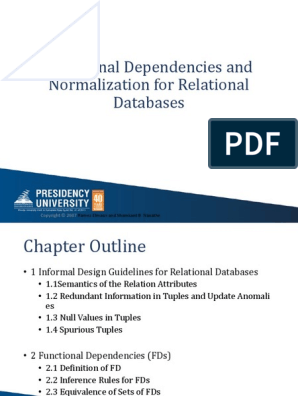0% found this document useful (0 votes)
30 views36 pagesLect 5 - Functional Dependencies and Normalization
Uploaded by
esraa.2020501Copyright
© © All Rights Reserved
We take content rights seriously. If you suspect this is your content, claim it here.
Available Formats
Download as PDF, TXT or read online on Scribd
0% found this document useful (0 votes)
30 views36 pagesLect 5 - Functional Dependencies and Normalization
Uploaded by
esraa.2020501Copyright
© © All Rights Reserved
We take content rights seriously. If you suspect this is your content, claim it here.
Available Formats
Download as PDF, TXT or read online on Scribd
/ 36


















































































